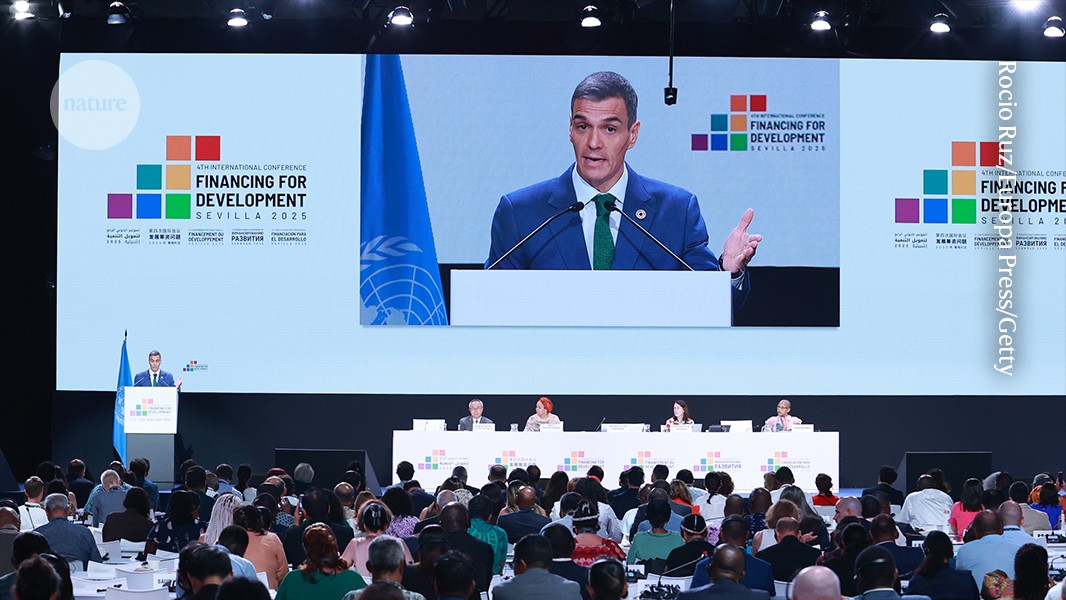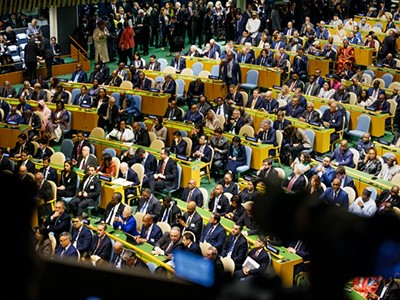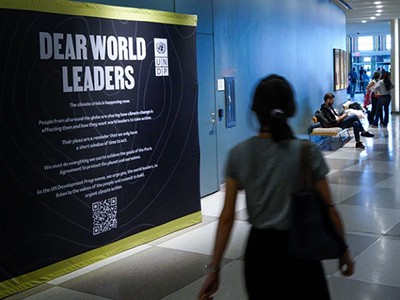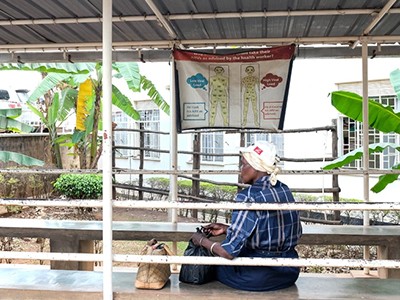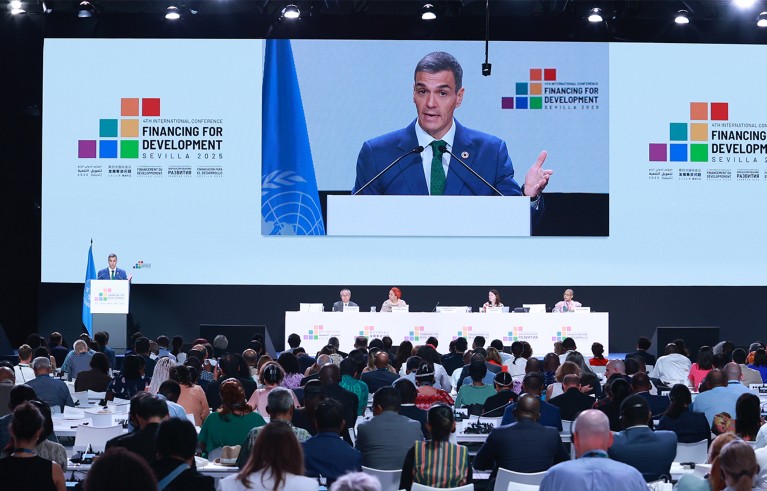
Despite a lack of consideration for funding science at the United Nations International Conference on Financing for Development in Seville, Spain, it’s not too late to take action.Credit: Rocio Ruz/Europa Press/Getty
Two weeks ago, world leaders met in sweltering heat in Seville, Spain, for the fourth International Conference on Financing for Development, sponsored by the United Nations. What might sound dry and technocratic is anything but, with implications for lives, health and well-being. The lack of funding for vaccines for the poorest countries, the need to provide more funding to build and improve primary schools and to protect people from climate-induced extreme weather all affect hundreds of millions of people.
Yet, there were precious few mentions in Seville of the one way in which leaders can deliver on those overarching goals: by investing in universities and research, and their associated infrastructure. Such funding in these financially straitened times will boost nations’ capacity to find their own solutions to the problems they face. It will also help to reduce, if not eliminate, countries’ dependence on increasingly unpredictable sources of international aid. The silence on scaling up financing of research for development is a huge omission. It must be rectified.
Support the Pact for the Future
The conditions for the conference were not favourable. Since the start of the year, the path to a more equitable, sustainable world has become rockier, as some of the wealthiest countries have reneged on their commitment to provide funding for improving people’s lives globally.
The world’s largest donor, the United States, has publicly disavowed the UN Sustainable Development Goals (SDGs) — the road map to a more-sustainable world by 2030. The country also withdrew from the Seville conference, two weeks before it was due to start. That was not unexpected, however. US spending on international affairs, including development, is on course to shrink to about one-sixth of its previous value of around US$60 billion annually. This reduction comes on top of the dismantling of the US Agency for International Development, the country’s withdrawal from the World Health Organization and the halting of US funds for the UN climate convention.
The United States is not alone. The United Kingdom is similarly cutting its aid budget while increasing defence spending, as are several nations in the European Union, including the Netherlands and Germany.
Rich countries must align science funding with the SDGs
Of some 130 activities and the resulting commitments in the Sevilla Platform for Action, just seven mention the word science. Four of these are from the same initiative: Advancing African Science Leadership Globally, co-led by South Africa’s government. Leaders of scientific organizations were at the main conference, but they seem unable to persuade policymakers of the case for a step change in funding for universities and science. This is inexplicable considering that, only last year, world leaders backed the Pact for the Future, a commitment to achieving the SDGs in which science is mentioned as having an important role.
Why is a plan for science and universities important? Because it is core to achieving the goals. For even one SDG measure alone (the goal for economic growth), spending on universities is a sure-fire way to achieving it (A. Valero and J. Van Reenen Econ. Educ. Rev. 68, 53–67; 2019). Low- and middle-income countries are already aligning their research to the SDGs, so further investments would be building on that work. At a deeper level, higher-education institutions train the physicians, engineers, scientists and teachers that countries need in spades.
So how to ramp up investments in universities and research? One idea is for regional development banks to see science and universities as a greater funding priority. They were at the conference and involved in discussions on filling the gaps left by the departing United States. Publicly funded regional lending institutions, such as the African Development Bank in Abidjan, Côte d’Ivoire, the Asian Infrastructure Investment Bank in Beijing and the Islamic Development Bank in Jeddah, Saudi Arabia, have relatively modest science-funding portfolios. The African Development Bank funds education and skills, for example, and the Islamic Development Bank has a small programme of research and technology grants and scholarships.
The end of AIDS is in sight: don’t abandon PEPFAR now
These investors need to be funding science and universities on a bigger, system-wide scale. We need them to think big and to consider how to unlock much larger amounts of capital than they currently have set aside to support researchers and knowledge-based institutions. They could start by commissioning studies on how governments can use innovative financial instruments to fund science, similar to those commonly used to fund public services, such as energy, transport and other infrastructure. In 2022, the European Commission and the European Investment Bank produced a report summarizing case studies for using financial instruments to fund higher education (see go.nature.com/46ndb7d).
For most regional development banks, increased science and university funding will be a departure from existing practice. This is in part because these institutions are modelled after the World Bank, one of the oldest and richest such organizations, with the United States as its largest shareholder. But the World Bank has been a reluctant investor in higher education and science, and there are few reasons to think this will change, at least with the present US administration. For instance, historically, education investments bring low, if any, rates of return.
But with the United States going its own way, the regional development banks do not need to live in the World Bank’s shadow any longer. Researchers must recognize that an opportunity has opened up and work with these banks to create their own funding streams, ultimately reducing the need to rely on other sources.


